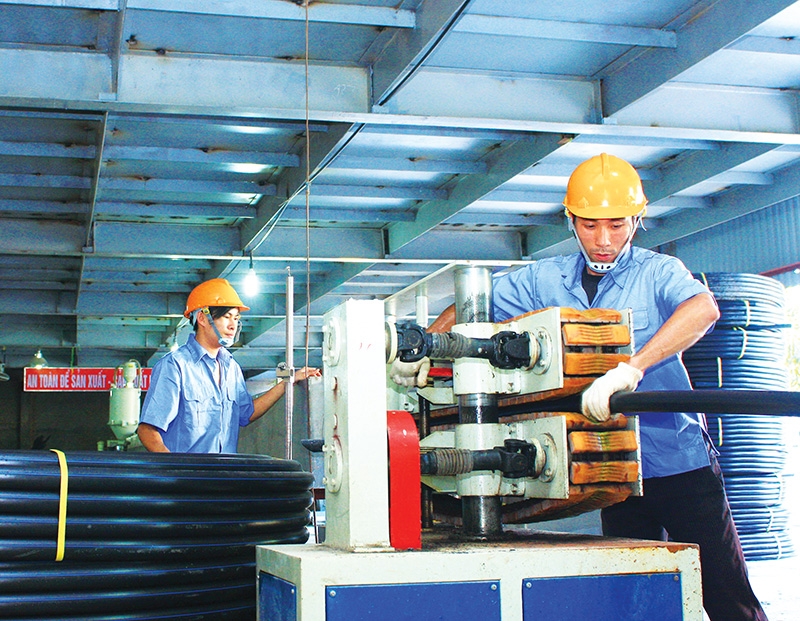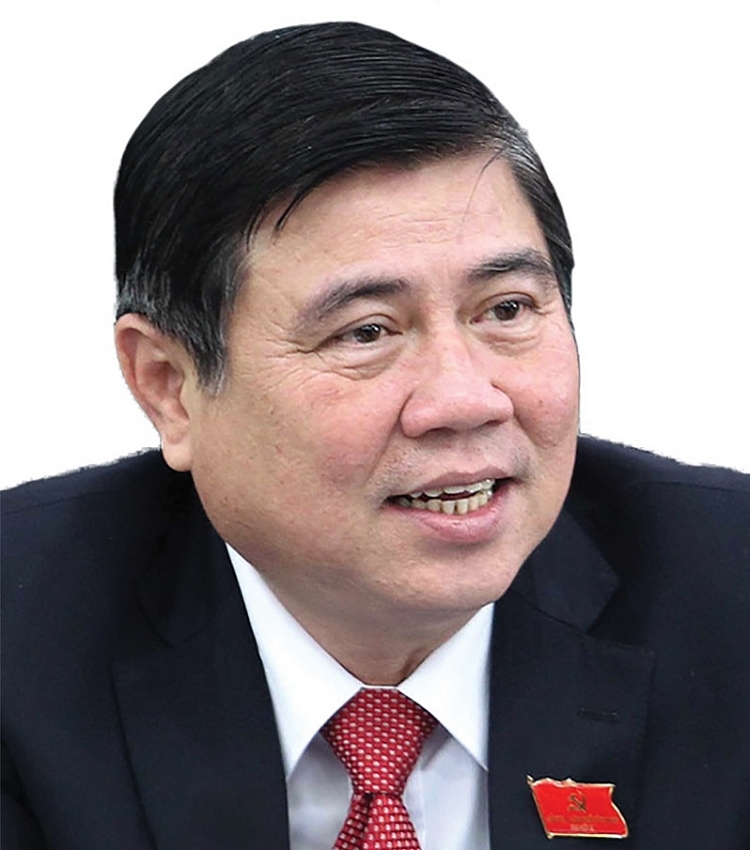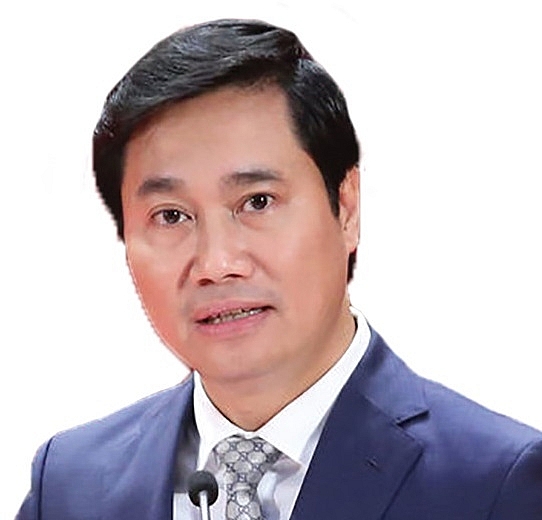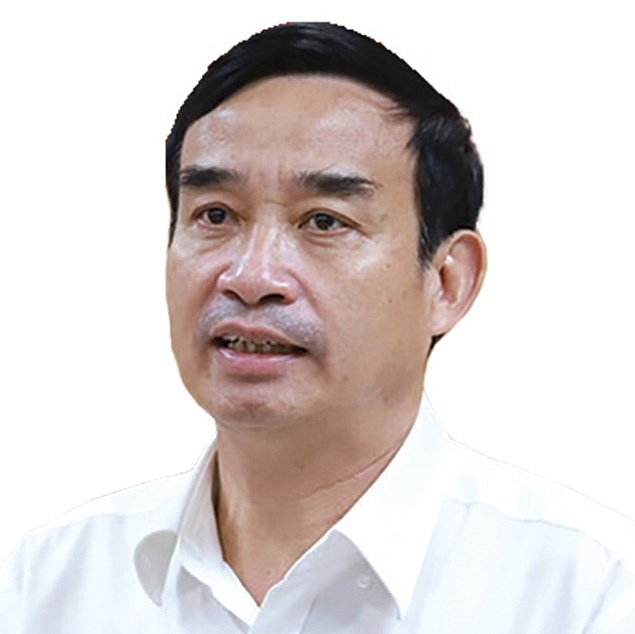High hopes for 2021 as GDP goals defined
 |
| Vietnam wants to iron out issues involving sustainability and low competitiveness for the years ahead. Photo: Le Toan |
Presiding over the government’s conference with localities in Hanoi last week, Prime Minister Nguyen Xuan Phuc said that the state had been implementing the socioeconomic development plan for 2016-2020 in a time when the economy was facing many difficulties.
After five years of implementing the plan, the country’s economy is witnessing impressive growth numbers in many emerging regions. The prime minister emphasised that this explosive growth may inspire many other localities to confidently surpass themselves.
Vietnam has accumulated more than $1.2 trillion worth of GDP in the last five years. Even in 2020, the nation’s economy will have maintained a positive growth of approximately 3 per cent, despite the heavy impacts of the global health crisis and the recession.
In addition, economic growth has also been more inclusive, including not just urban areas but also rural ones as well as deltas, mountainous areas, and islands. Currently, Vietnam’s economic growth no longer depends on any particular economic sector, and the role of the private economy is gradually increasing as an important driving force.
Over the past five years, the Vietnamese economy has created more than eight million new jobs. Thanks to these new employment options, people’s average income has been increasing while offering them a better livelihood. The average income per employee amounts to nearly $5,000 a year, reflecting a rise of nearly 145 per cent compared to five years ago. Judging by the World Bank’s standards for purchasing power parity, the average income of Vietnamese people is equivalent to nearly $9,000.
Along with being economically successful, the country has also made rapid social progress. In the latest United Nations Development Programme report, Vietnam’s Human Development Index was in the “highly developed” group. Moreover, Vietnam also achieved meaningful progress in poverty reduction, with the rate of poor households decreasing from 10 per cent at the beginning of 2016 to 3 per cent now.
At last week’s conference, the government and localities identified limitations the Vietnamese economy is facing. For example, economic growth remains not fully sustainable. Though many localities are growing fast, others have not found their ways yet, with employment opportunities not being guaranteed, especially in rural areas, in the agricultural sector, and the informal sector.
Meanwhile, private enterprises are still ailing from low competitiveness. Among the many obstacles are the structural problems of the economy, infrastructural bottlenecks, the quality of human resources, legal institutions, and the business environment, resulting in thousands of enterprises applying for dissolution or bankruptcy every year.
The National Assembly has set a GDP growth rate of about 6 per cent for 2021. However, in the face of the development requirements, the government is striving for 6.5 per cent or even more, thereby preparing the foundation to accelerate growth further from 2022 onwards. PM Phuc stated at the conference, “In addition to economic growth in numbers, we must also focus on the quality of growth while accelerating economic restructuring.”
Despite these targets, Vietnam’s economic recovery in 2021 still depends on the control of the pandemic. The PM said that for socioeconomic development to be stable and sustainable, a respective macroeconomic foundation must be maintained.
Accordingly, ministries, agencies, and localities need to define their growth targets to ensure not only macroeconomic stability but also employment opportunities, income, and social welfare, thereby contributing to the fight against the narrowing development gap.
“With just 1 per cent, we will enable the creation of 300,000 more jobs. Without jobs, where would people get their income from?” the prime minister questioned.
As infrastructure is one of the most important development factors, Deputy Prime Minister Pham Binh Minh warned of using up all official development assistance (ODA) that has so far been granted in the past few years. “While ODA is a very important source of capital, in the coming time, it will be limited and come with higher interest rates,” he said.
After the conference, PM Phuc said he would issue an order to start several interregional traffic projects.
“Of course, we will first focus on 2021 but we also have to think about the next five years and long-term development,” the PM said when referring to projects like the North-South Expressway, Ho Chi Minh City’s railway to the southwestern region, and expressways in the Central Highlands and coastal regions.
“Localities have to work on two things immediately. One is production development, the other one is human resources development – both of which will help to welcome new investment flows,” the prime minister said.
According to PM Phuc, localities need to pay attention to the goals of the sustainable development triangle of economy, society, and the environment. Moreover, the localities should not trade the environment for economic growth, and resolutely deal with pollution cases.
| Nguyen Thanh Phong - Chairman, Ho Chi Minh City People’s Committee
Ho Chi Minh City identified its theme for 2021 as “the year of building an urban government and improving the investment environment”, with the overall goal of continuing to realise the dual goals set out by the government. That is, focusing on controlling the pandemic while implementing effective economic recovery programmes. Up to now, our city has built a socioeconomic development plan for 2021 with 20 targets, with the focus lying on building an urban government and improving the investment environment. To achieve the set goals, the city has petitioned the government to soon issue a decree guiding the implementation of the urban government organisation in the city under Resolution No.131/2020/QH14 of the National Assembly. The city also petitioned the government and the prime minister to direct ministries and central agencies to soon guide land use plans upon equitisation to continue to effectively implement the National Assembly’s Resolution No.54/2017/QH14 on piloting specific mechanisms and policies for Ho Chi Minh City’s development. Nguyen Tuong Van - Chairman, Quang Ninh People’s Committee
The year 2021 may still be difficult as COVID-19 is not yet completely under control. Quang Ninh province sets the target of 10 per cent economic growth based on the expected economic outcome of 2020. Taking public investment to lead the province’s business environment, Quang Ninh focuses on solving all difficulties for businesses. Some projects have been investing only 22 hours after the investors applied for their license, determined to promote public investment. Staff at all levels of the site clearance department are promptly solving problems in the locality, such as with the Van Don-Mong Cai Expressway project, which after only 15 days of mobilisation, has handed over the site without enforcement or complaint. In addition, Quang Ninh also accelerates the growth of the industrial sector, compensating for the decline in the service sector due to the influence of COVID-19. In 2021, the province’s mining industry will likely increase by 7.1 per cent, accounting for 17.7 per cent of regional GDP, and contributing 39 per cent of the total budget revenue of the province as a whole. Le Trung Chinh - Chairman, Danang People’s Committee
In 2020, Danang doubled its foreign investment attraction in industrial zones compared to the same period in 2019. In 2021, Danang will continue to effectively perform the dual tasks of fighting the pandemic and developing the economy, while implementing further solutions to establish more revenue sources and increasing budget revenue. Danang focuses on directing and handling bottlenecks in investment procedures, construction processes, and site clearances, as well as compensation and ground handovers for key projects. At the same time, the city will speed up the disbursement of public investment capital and strive to complete disbursement of construction capital in 2021, according to the set plan. Danang requested that the government considers and issues a decree guiding the pilot organisation of the urban government model in the city. Concurrently, Danang also kindly requested ministries to speed up implementing large and connected traffic projects to create a driving force for socioeconomic development in the central region and the Central Highlands. |
What the stars mean:
★ Poor ★ ★ Promising ★★★ Good ★★★★ Very good ★★★★★ Exceptional
 Tag:
Tag:
Related Contents
Latest News
More News
- Cake by VPBank posts strong gains in scale and efficiency leveraging AI focus (January 05, 2026 | 18:55)
- Vietnam's retail market tops $269 billion in 2025 amid e-commerce boom (December 31, 2025 | 19:00)
- Global alliance develops $1 billion AI data centre network in Vietnam (December 30, 2025 | 10:08)
- Businesses ramp up production as year-end orders surge (December 30, 2025 | 10:05)
- Vietnam’s GDP forecast to grow by 9 per cent in 2026 (December 29, 2025 | 08:29)
- Vietnam's top 500 value-creating enterprises announced (December 27, 2025 | 08:00)
- Three-way partnership unveiled to ease financing at Hong Hac City (December 24, 2025 | 14:13)
- PM orders investment model for North–South high-speed rail (December 22, 2025 | 17:43)
- First members of Danang International Finance Centre revealed (December 22, 2025 | 17:39)
- Securing capital and efficiency for Vietnam’s 2026-2030 growth ambitions (December 17, 2025 | 10:00)


























 Mobile Version
Mobile Version